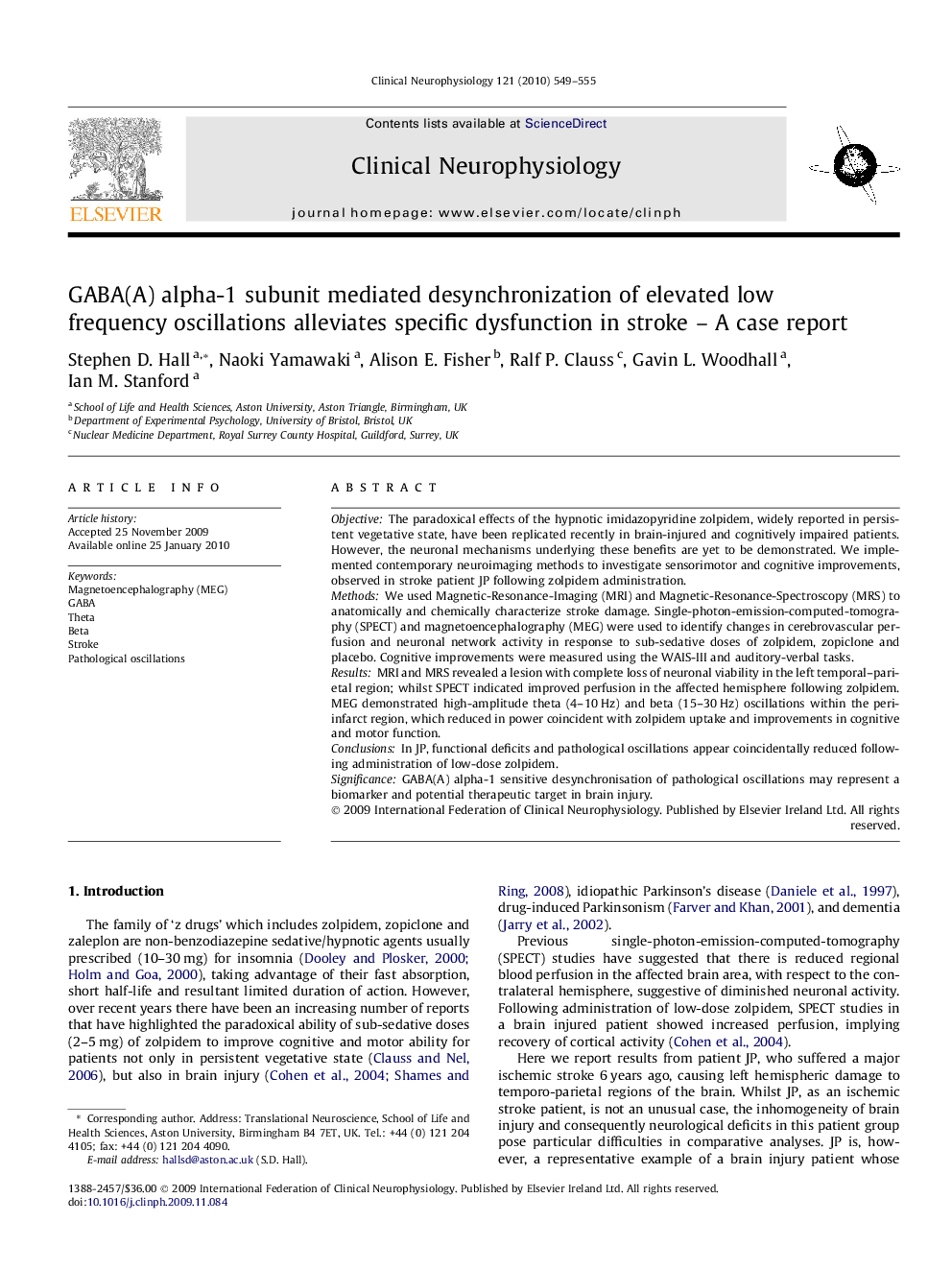| Article ID | Journal | Published Year | Pages | File Type |
|---|---|---|---|---|
| 6009196 | Clinical Neurophysiology | 2010 | 7 Pages |
ObjectiveThe paradoxical effects of the hypnotic imidazopyridine zolpidem, widely reported in persistent vegetative state, have been replicated recently in brain-injured and cognitively impaired patients. However, the neuronal mechanisms underlying these benefits are yet to be demonstrated. We implemented contemporary neuroimaging methods to investigate sensorimotor and cognitive improvements, observed in stroke patient JP following zolpidem administration.MethodsWe used Magnetic-Resonance-Imaging (MRI) and Magnetic-Resonance-Spectroscopy (MRS) to anatomically and chemically characterize stroke damage. Single-photon-emission-computed-tomography (SPECT) and magnetoencephalography (MEG) were used to identify changes in cerebrovascular perfusion and neuronal network activity in response to sub-sedative doses of zolpidem, zopiclone and placebo. Cognitive improvements were measured using the WAIS-III and auditory-verbal tasks.ResultsMRI and MRS revealed a lesion with complete loss of neuronal viability in the left temporal-parietal region; whilst SPECT indicated improved perfusion in the affected hemisphere following zolpidem. MEG demonstrated high-amplitude theta (4-10Â Hz) and beta (15-30Â Hz) oscillations within the peri-infarct region, which reduced in power coincident with zolpidem uptake and improvements in cognitive and motor function.ConclusionsIn JP, functional deficits and pathological oscillations appear coincidentally reduced following administration of low-dose zolpidem.SignificanceGABA(A) alpha-1 sensitive desynchronisation of pathological oscillations may represent a biomarker and potential therapeutic target in brain injury.
